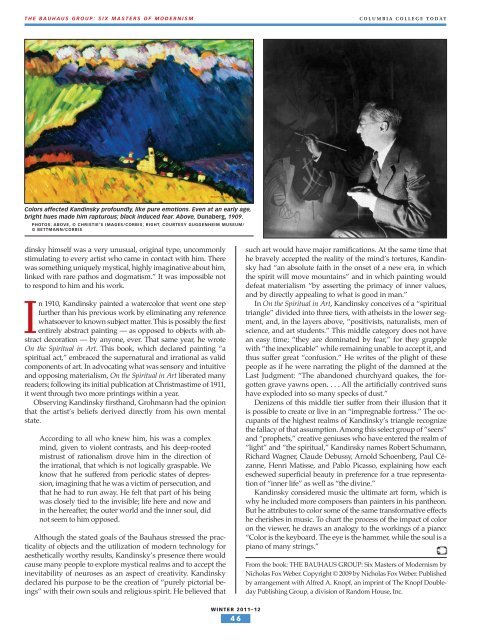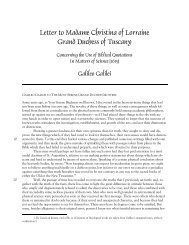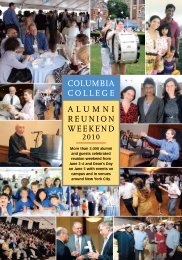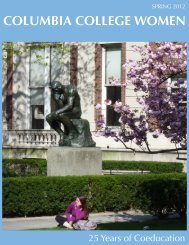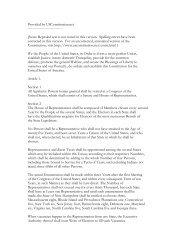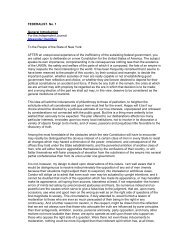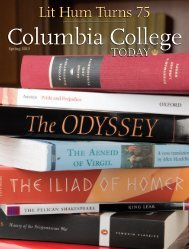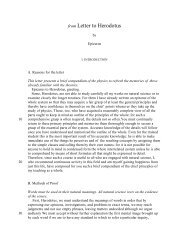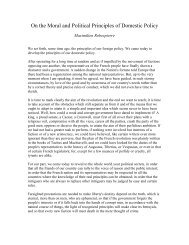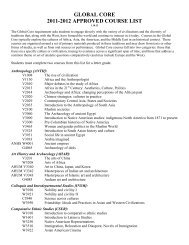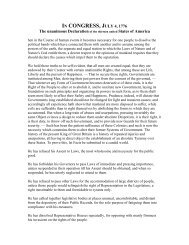Japan Storm - Columbia College - Columbia University
Japan Storm - Columbia College - Columbia University
Japan Storm - Columbia College - Columbia University
Create successful ePaper yourself
Turn your PDF publications into a flip-book with our unique Google optimized e-Paper software.
THE BAUHAUS GROUP: SIX MASTERS OF MODERNISM COLUMBIA COLLEGE TODAY<br />
Colors affected Kandinsky profoundly, like pure emotions. Even at an early age,<br />
bright hues made him rapturous; black induced fear. Above, Dunaberg, 1909.<br />
PHOTOS: ABOVE, © CHRISTIE’S IMAGES/CORBIS; RIGHT, COURTESY GUGGENHEIM MUSEUM/<br />
© BETTMANN/CORBIS<br />
dinsky himself was a very unusual, original type, uncommonly<br />
stimulating to every artist who came in contact with him. There<br />
was something uniquely mystical, highly imaginative about him,<br />
linked with rare pathos and dogmatism.” It was impossible not<br />
to respond to him and his work.<br />
In 1910, Kandinsky painted a watercolor that went one step<br />
further than his previous work by eliminating any reference<br />
whatsoever to known subject matter. This is possibly the first<br />
entirely abstract painting — as opposed to objects with abstract<br />
decoration — by anyone, ever. That same year, he wrote<br />
On the Spiritual in Art. This book, which declared painting “a<br />
spiritual act,” embraced the supernatural and irrational as valid<br />
components of art. In advocating what was sensory and intuitive<br />
and opposing materialism, On the Spiritual in Art liberated many<br />
readers; following its initial publication at Christmastime of 1911,<br />
it went through two more printings within a year.<br />
Observing Kandinsky firsthand, Grohmann had the opinion<br />
that the artist’s beliefs derived directly from his own mental<br />
state.<br />
According to all who knew him, his was a complex<br />
mind, given to violent contrasts, and his deep-rooted<br />
mistrust of rationalism drove him in the direction of<br />
the irrational, that which is not logically graspable. We<br />
know that he suffered from periodic states of depression,<br />
imagining that he was a victim of persecution, and<br />
that he had to run away. He felt that part of his being<br />
was closely tied to the invisible; life here and now and<br />
in the hereafter, the outer world and the inner soul, did<br />
not seem to him opposed.<br />
Although the stated goals of the Bauhaus stressed the practicality<br />
of objects and the utilization of modern technology for<br />
aesthetically worthy results, Kandinsky’s presence there would<br />
cause many people to explore mystical realms and to accept the<br />
inevitability of neuroses as an aspect of creativity. Kandinsky<br />
declared his purpose to be the creation of “purely pictorial beings”<br />
with their own souls and religious spirit. He believed that<br />
WINTER 2011–12<br />
46<br />
such art would have major ramifications. At the same time that<br />
he bravely accepted the reality of the mind’s tortures, Kandinsky<br />
had “an absolute faith in the onset of a new era, in which<br />
the spirit will move mountains” and in which painting would<br />
defeat materialism “by asserting the primacy of inner values,<br />
and by directly appealing to what is good in man.”<br />
In On the Spiritual in Art, Kandinsky conceives of a “spiritual<br />
triangle” divided into three tiers, with atheists in the lower segment,<br />
and, in the layers above, “positivists, naturalists, men of<br />
science, and art students.” This middle category does not have<br />
an easy time; “they are dominated by fear,” for they grapple<br />
with “the inexplicable” while remaining unable to accept it, and<br />
thus suffer great “confusion.” He writes of the plight of these<br />
people as if he were narrating the plight of the damned at the<br />
Last Judgment: “The abandoned churchyard quakes, the forgotten<br />
grave yawns open. . . . All the artificially contrived suns<br />
have exploded into so many specks of dust.”<br />
Denizens of this middle tier suffer from their illusion that it<br />
is possible to create or live in an “impregnable fortress.” The occupants<br />
of the highest realms of Kandinsky’s triangle recognize<br />
the fallacy of that assumption. Among this select group of “seers”<br />
and “prophets,” creative geniuses who have entered the realm of<br />
“light” and “the spiritual,” Kandinsky names Robert Schumann,<br />
Richard Wagner, Claude Debussy, Arnold Schoenberg, Paul Cézanne,<br />
Henri Matisse, and Pablo Picasso, explaining how each<br />
eschewed superficial beauty in preference for a true representation<br />
of “inner life” as well as “the divine.”<br />
Kandinsky considered music the ultimate art form, which is<br />
why he included more composers than painters in his pantheon.<br />
But he attributes to color some of the same transformative effects<br />
he cherishes in music. To chart the process of the impact of color<br />
on the viewer, he draws an analogy to the workings of a piano:<br />
“Color is the keyboard. The eye is the hammer, while the soul is a<br />
piano of many strings.”<br />
From the book: THE BAUHAUS GROUP: Six Masters of Modernism by<br />
Nicholas Fox Weber. Copyright © 2009 by Nicholas Fox Weber. Published<br />
by arrangement with Alfred A. Knopf, an imprint of The Knopf Doubleday<br />
Publishing Group, a division of Random House, Inc.


